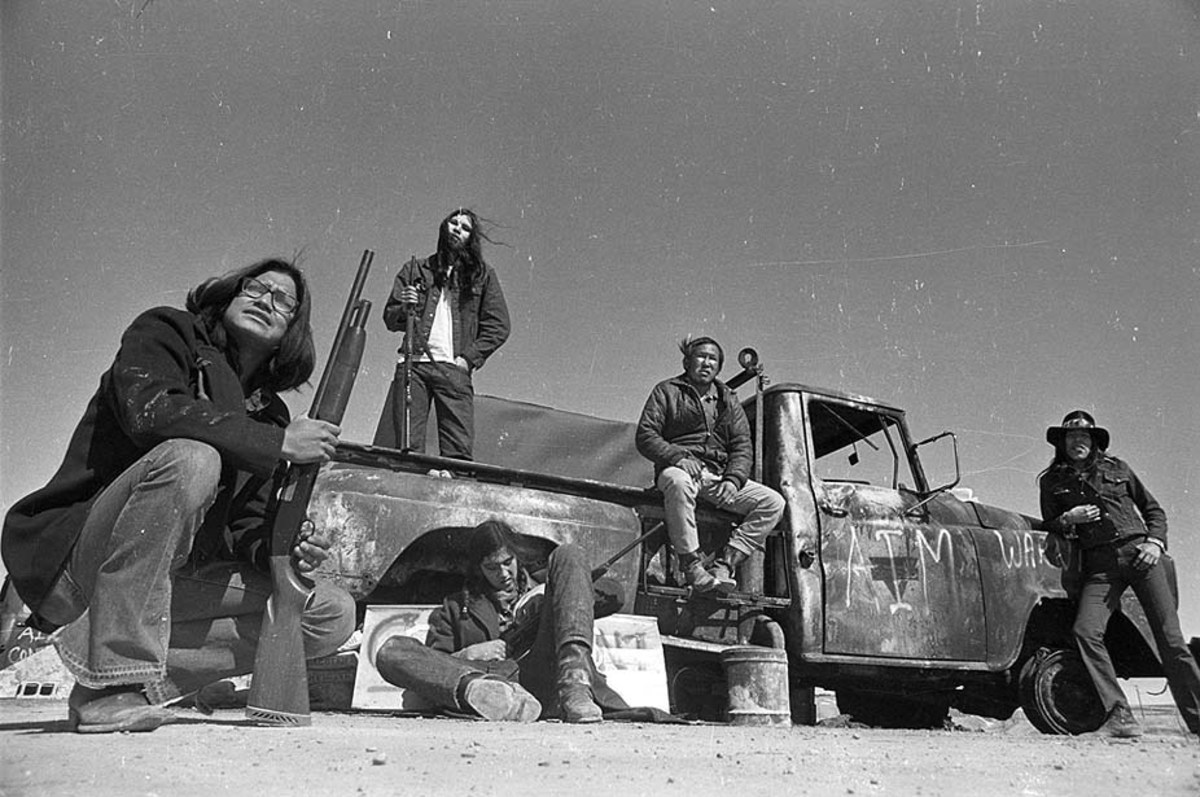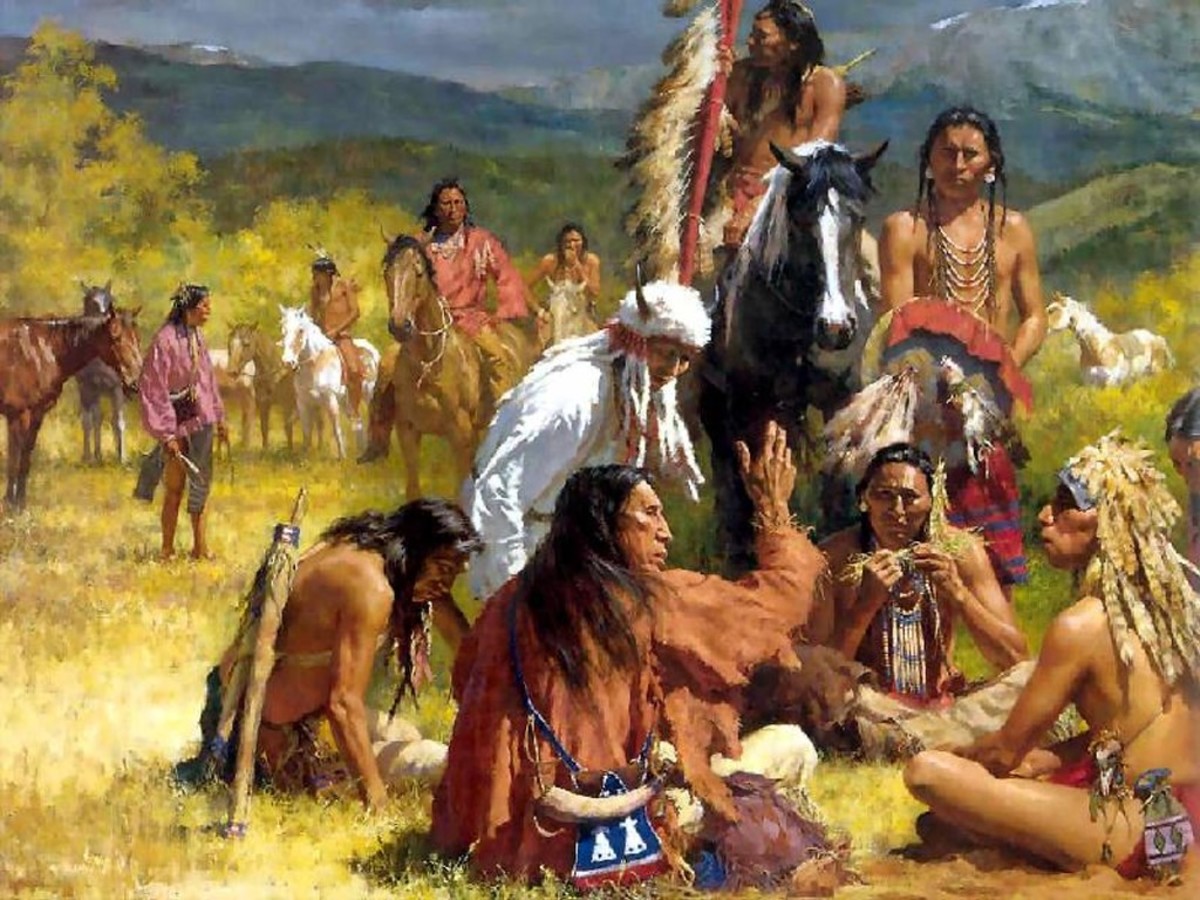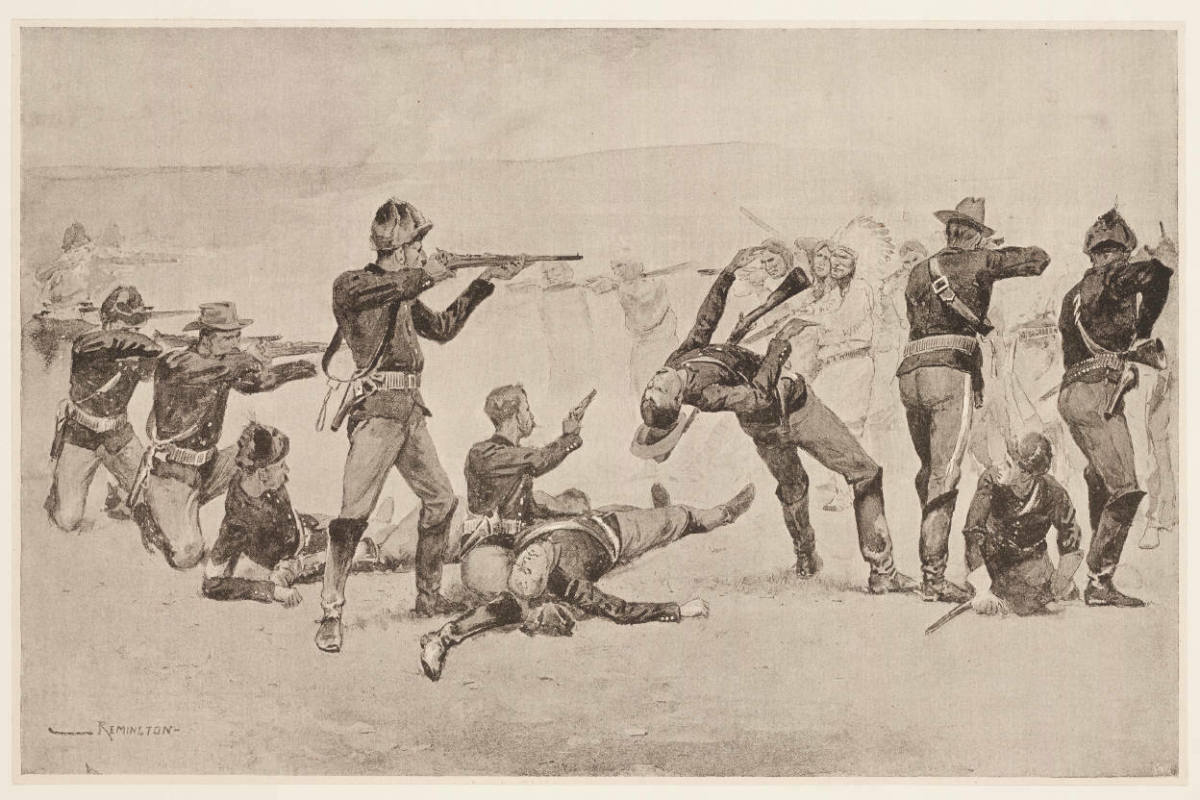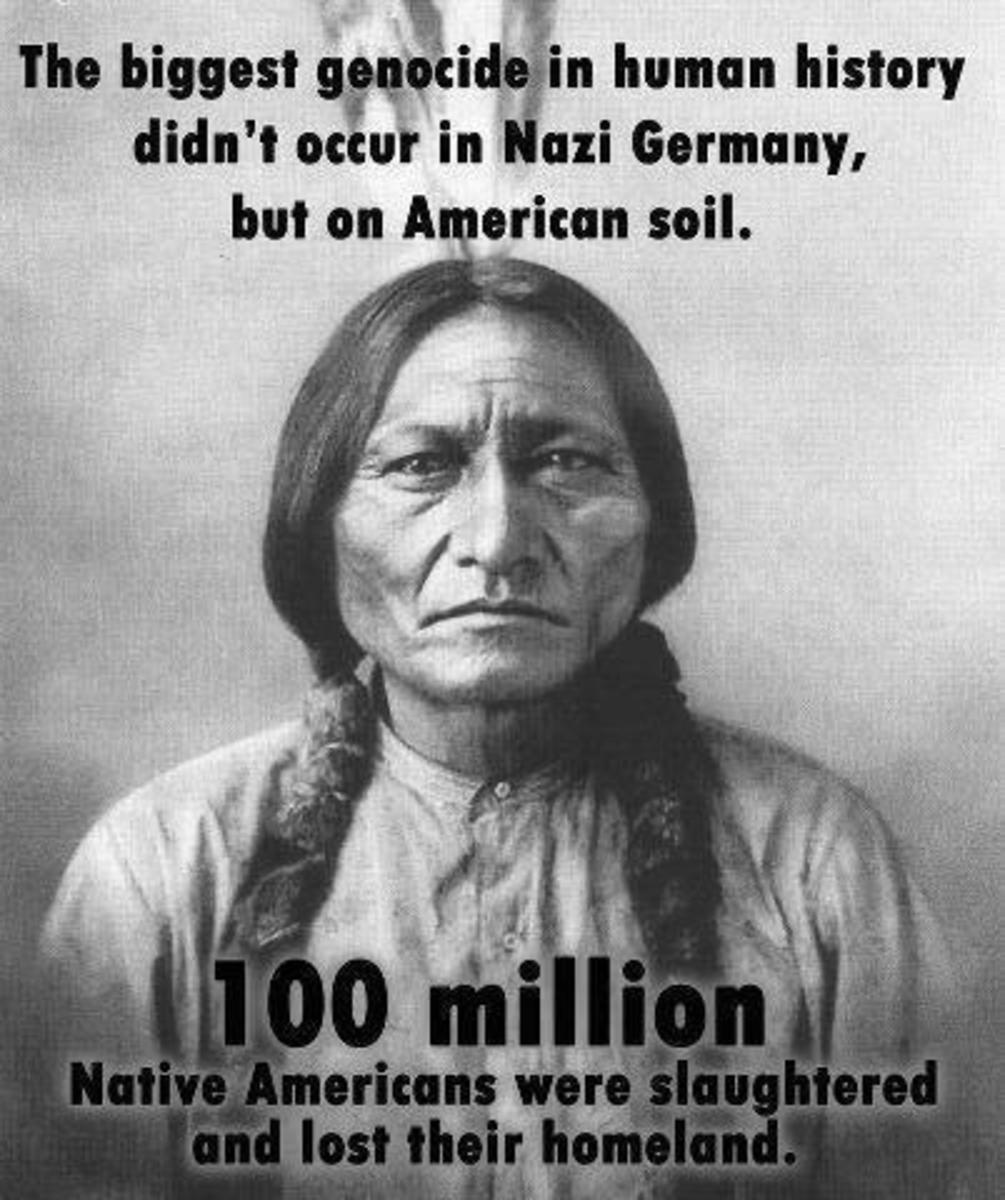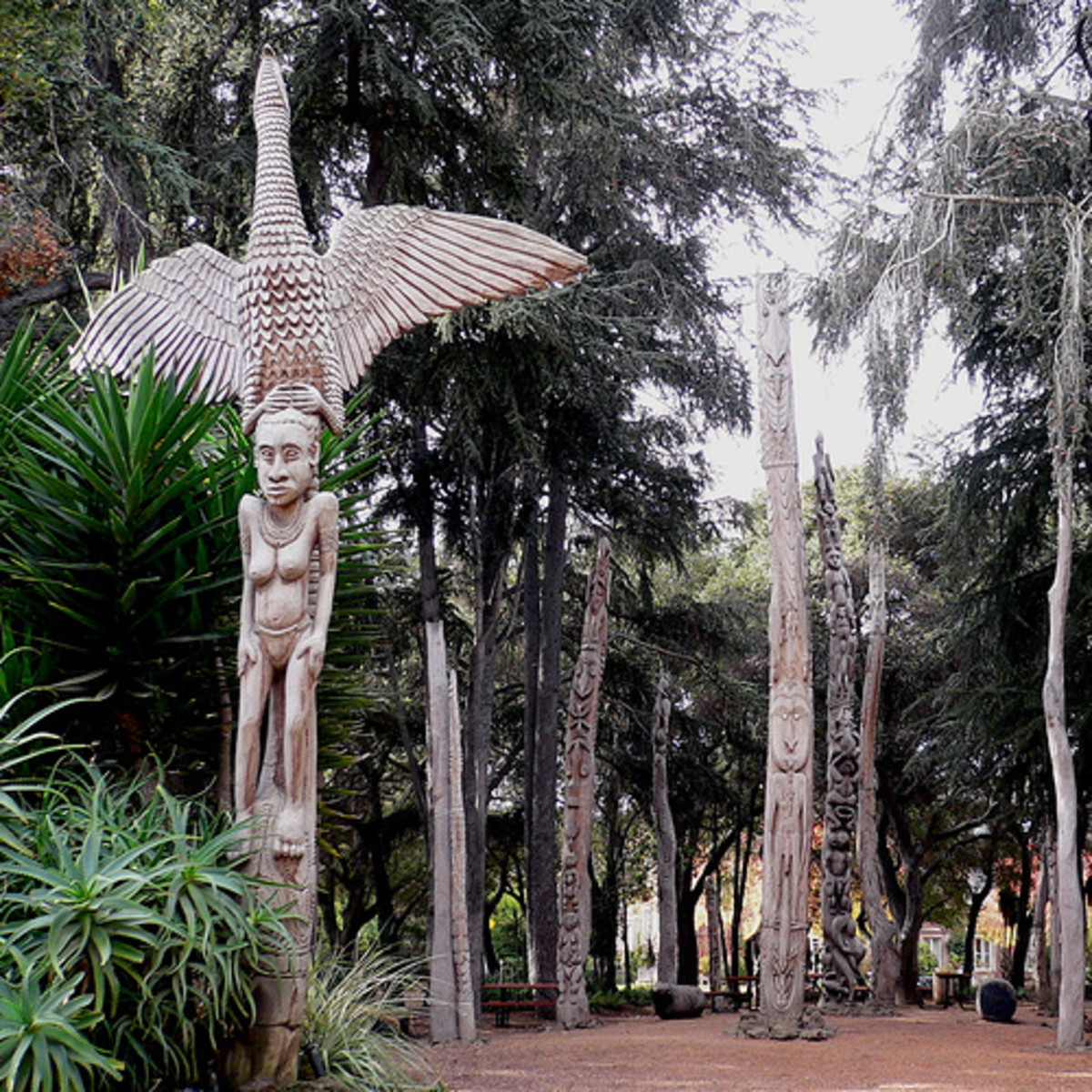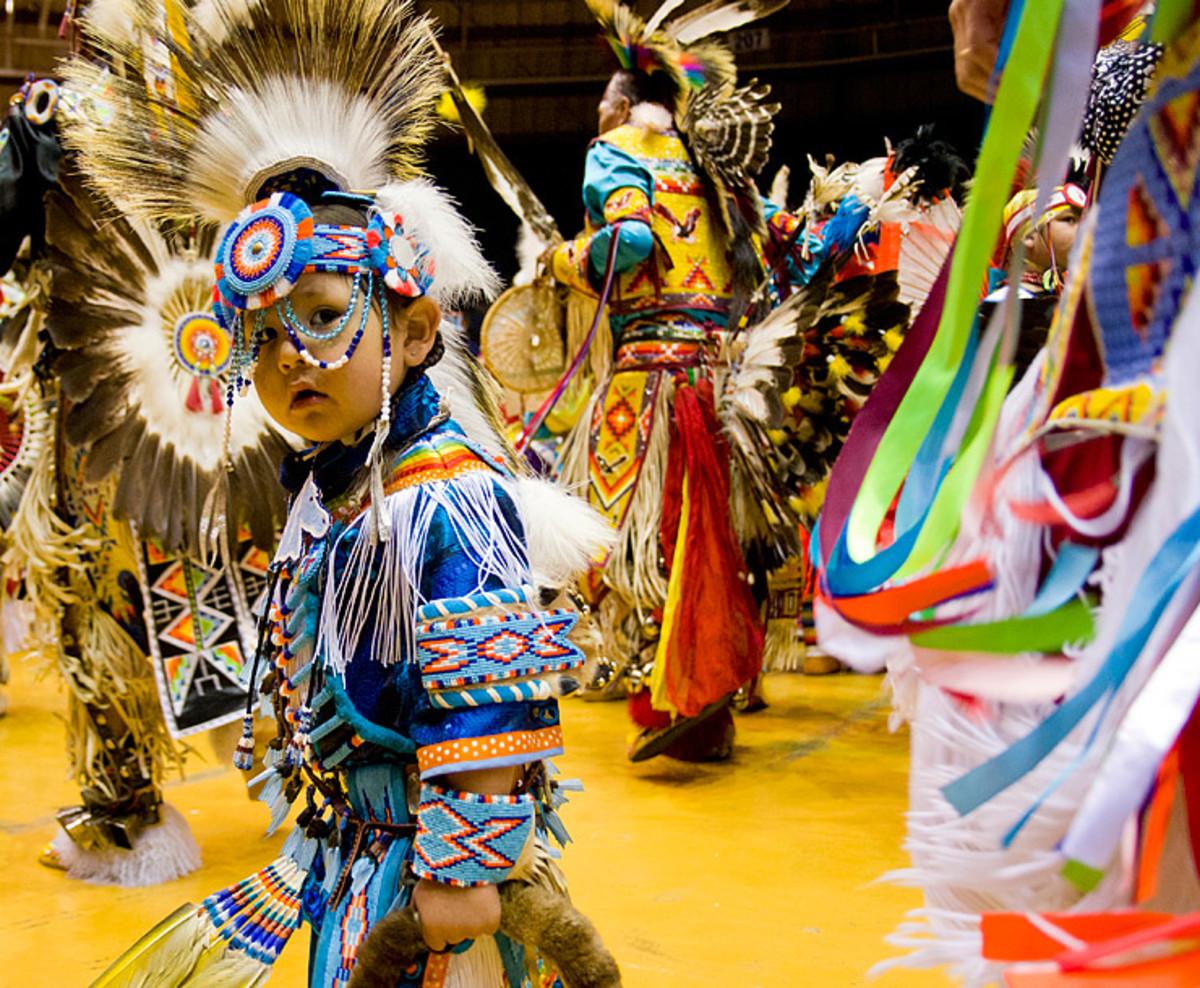- HubPages»
- Education and Science»
- History & Archaeology»
- History of the Americas
Wounded Knee Occupation - A Commentary
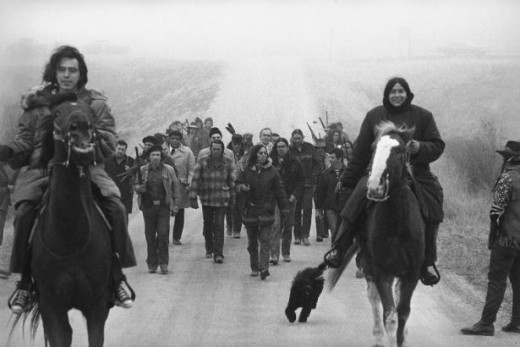
A Meeting Of Nations
In the summer of 1968, two hundred members of the Native American Nation came together for a meeting to discuss various issues that Native people of the time were dealing with on a daily basis. Among these issues were, police brutality, high unemployment rates, rampant drug abuse and the Federal Government's policies concerning Native Americans.
Also to discuss the government's Indian Termination Policy established in the 1930s. The policy was strictly enforced in the 1950s and it forced Natives to move away from reservations and cultural life to live in cities. However, the government's plan failed;
"As independent citizens and taxpayers, without good education or experience, most 'terminated' Natives were reduced within a few years to widespread illness and utter poverty, whether or not they were relocated to cities from the reservations.” - US Government Report
The treatment of Natives throughout Anglo occupation has been appalling. It has spawned many groups of protesters who vainly attempt to regain land and -- most of all -- cultural dignity. Ergo, two hundred members of the Native community decided to form an alliance, one that would attempt, at first, to use due process. Play the Anglo game. Follow their rules and plead the valid argument.
The meeting gave birth to the American Indian Movement, commonly referred to as AIM. An organization that would soon be the ultimate voice of the Native people and give rise to some of the largest protests in American history. They incited hope in an otherwise downtrodden demographic. With the creation came the emergence of the well known AIM leaders, Dennis Banks and Clyde Bellecourt.
It didn't take AIM long to attract the world's attention as not only a political movement, but, as a force behind an aggressive campaign to restore pride and basic human rights to them and their people. The first well known occupation occurred on June 20,1969 at Alcatraz island.
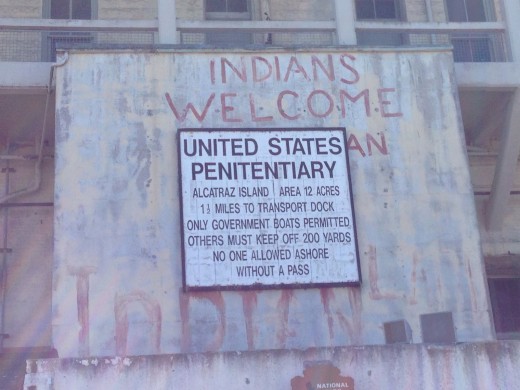
"Our Great Spirits Land"
On the morning of November 20 1969, seventy-nine Natives -- men, women, children and families alike -- steered a small boat towards the infamous island of Alcatraz Federal Prison. Despite attempted blockade by the Coast Guard, the group, Indians Of All Tribes, landed on the rock and declared to the world their intentions were to reclaim the land of their people promised to them by a treaty signed years ago. They issued a proclamation to the US government. The proclamation may have struck a nerve, as it should. One can almost say the art of satire is well represented here, nonetheless, I am sure it is an honest and fair deal as far as the members of IAT saw it.
Exhibit A: The Proclamation Issued By Indians of All Tribes, 1963
a copy of the proclamation sent to the federal government by indians of all tribes activists from ALCATRAZ island in 1963. it mirrors previous ones issued by us to tribes during the genocides of the 1800s. - national archives
To The Great White Father and His People,
"We, the native Americans, re-claim the land known as Alcatraz Island in the name of all American Indians by right of discovery. We wish to be fair and honorable in our dealings with the Caucasian inhabitants of this land, and hereby offer the following treaty: We will purchase said Alcatraz Island for 24 dollars in glass beads and red cloth, a precedent set by the white man's purchase of a similar island about 300 years ago. We know that $24 in trade goods for these sixteen acres is more than was paid when Manhattan Island was sold, but we know that land values have risen over the years. Our offer of $1.24 per acre is greater than the 47 cents per acre the white men are now paying the California Indians for their land. We will give to the inhabitants of this land a portion of that land for their own, to be held in trust by the American Indian Government for as long as the sun shall rise and the rivers go down to the sea -- to be administered by the Bureau of Caucasian Affairs (BCA). We will further guide the inhabitants in the proper way of living. We will offer them our religion, our education, our life-ways, in order to help them achieve our level of civilization and thus raise them and all their white brothers up from their savage and unhappy state. We offer this treaty in good faith and wish to be fair and honorable in our dealings with all white men. We feel that this so-called Alcatraz Island is more than suitable as and Indian Reservation, as determined by the white man's own standards.
By this we mean that this place resembles most Indian reservations, in that:
1. It is isolated from modern facilities, and without adequate means of transportation.
2. It has no fresh running water.
3. The sanitation facilities are inadequate.
4. There are no oil or mineral rights.
5. There is no industry and so unemployment is very great.
6. There are no health care facilities.
7. The soil is rocky and non-productive and the land does not support game.
8. There are no educational facilities.
9. The population has always been held as prisoners and kept dependent upon others.
Further, it would be fitting and symbolic that ships from all over the world, entering the Golden Gate, would first see Indian land, and thus be reminded of the true history of this nation. This tiny island would be a symbol of the great lands once ruled by free and noble Indians."
- Alcatraz Proclamation, Indians Of All Tribes, 1969
Alcatraz Island, San Francisco, CA
Broken Trust
Alcatraz had been occupied before by Natives, like in 1964, when Richard McKenzie and four other Sioux tribe members controlled the island for four hours, just fifteen days before the IAT occupation another group piloted a small boat towards the island and when the coast guard intercepted them, they abandon ship and swam to the island claiming it for their people. The Coast Guard removed them without incident.
Then the November 20 occupation came and it proved it wasn't going to end as quickly as the others. This group was well organized, large in numbers, and children were present. The group claimed the island on the merit of the Treaty of Fort Laramie (1868) that stated all federal land that was no longer in use or surplus was to be returned to the Native people. Ergo, when Alcatraz was shut down, the island being sacred grounds, should have returned to them regardless. They also cited the mistreatment of the Indian Termination Policy and other treatises broken by the federal government.
Organizer Richard Oakes sent this message to the San Francisco Department of Interior
We invite the United States to acknowledge the justice of our claim. The choice now lies with the leaders of the American government - to use violence upon us as before to remove us from our Great Spirit's land, or to institute a real change in its dealing with the American Indian. We do not fear your threat to charge us with crimes on our land. We and all other oppressed peoples would welcome spectacle of proof before the world of your title by genocide. Nevertheless, we seek peace.
"UnThanksgiving Day"
Shortly after, President Nixon assigned Special Council Leonard Garment to take over the negotiation. This was proving to be a different organization. When Thanksgiving came, over a hundred supporters had gathered on the Rock. John Trudell began broadcasting daily radio shows from the island and a longshoreman setup shop on pier to deliver food and supplies to the occupiers. This movement had momentum, more so than any Native protest in a long time.
By May of 1970, the federal government had cut off power to the island and it would seem that the movement had gone stagnate and the death of a young girl in a fall led to some of the original protesters leaving and the ones showing up in their place were not all Natives, some even bringing drug problems to the island.
Nineteen months after that cold November morning when 79 people stood up to Great White Father, the occupation was at an end. The United States Government moved in and cleared out the Natives with force. American Indian Movement has been labeled the organizers of the occupation then and even still today by less than knowledgeable or ignorant sources. Truth is, AIM had nothing to do with it and only came along later when they dispatched a group of emissaries to aide the tribes people on the island. Consequently, it give rise to the FBI keeping closer tabs on the group, despite a peaceful track record, and labeling them a movement worth watching.
The truth to why the Alcatraz occupation happened is that an Indian Cultural Center had been burned down and members of a local Native group, whom had been planning on occupying the island a few weeks earlier, saw no other way to rebuild the center affordably unless on Native land. Alcatraz was close to San Francisco and happened to be Native land, in surplus no less.. That, and of course the horrible treatment and disrespect of the Native Nation by the federal government led to the retaking of their land.
The United States never or have they ever issued a title or deed of land to the Native tribes as far as surplus federal land.
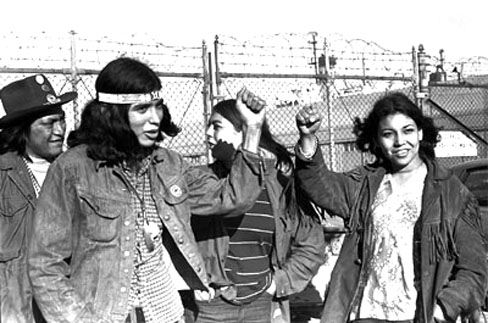
Once There Had Been A Chance
In October of 1972, AIM and other Native groups, organized a protest to be held in Washington DC. ‘The Trail of Broken Treaties’ was a caravan of vehicles the traveled from the West coast to the East. The movement had formed in the wake of yet another broken treaty between Natives and the federal government. The US Bureau of Indian Affairs and AIM had drafted an article to address the poor and unfair treatment towards Native relations and offered solutions that could lead to resolve them. The government agreed to a meeting that would address the document and hear from leaders of AIM. After the final draft of the article was finished, a four mile long caravan of vehicles left from Seattle and drove to Washington DC to present their case to the representatives of the Great White Father.
Consequently, upon seeing the caravan, Assistant Secretary of the Interior Harrison Loesch, overseer of the Bureau of Land Management and BIA, cancelled all activities, including the guest housing arranged for Native elders. Native leaders tried to argue the fact, however, Loesch and his staff were not listening and found the scene caused was an act of aggressive intentions. It never dawned on them that the Native peoples saw the article as an historic event and merely wanted to be apart of it. Native leader's primary concern was the housing for the older members of the group and it seemed that it might have been provided. Although, while awaiting housing for the Chiefs, an impromptu sit-in protest was staged that ended up not only cancelling any housing offers but it also lasted two hours. That was when police riot squads came and aggressively removed the protesters, or, as one witness said, “beat the hell out of ‘em.”
This is just one of many blunders associated with the government’s Native relations and would be the root cause to an even bigger one. After word spread about the federals turning away their people, the Native Americans were at their breaking point.
It was time for action.
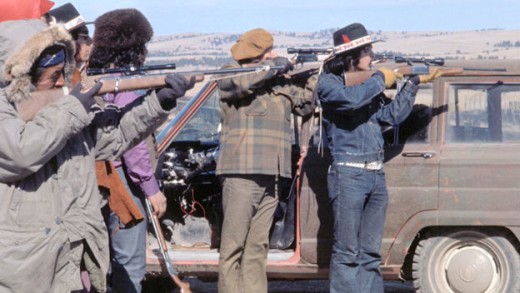
Wounded Knee Revisited
In February of 1972, approximately 200 Oglala Lakota and followers of the American Indian Movement seized and occupied the town of Wounded Knee, South Dakota, on the Pine Ridge Indian Reservation.
They were armed (can't say I blame them), in large numbers and upon seizing the town announced they(Native Americans) were no longer under federal government authority and demanded negotiations resume from the Washington DC fiasco.
The town of Wounded Knee held no strategic value nor did it offer any high ground against an invading force. Nevertheless, it held a much deeper and powerful value. One that would send a strong message to the Caucasian government. It was the location of the largest mass shooting in American history. Men, Women and children were slaughtered by encircling gunmen.
The Massacre at Wounded Knee.
Join Me For A Stroll Down Memory Lane
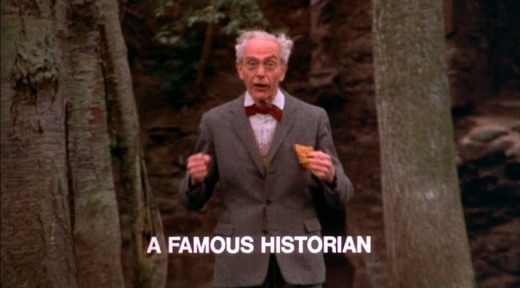
The Confusion Of Deafening Thunder
December 1890, during the Ghost Dance War, the government's 7th Cavalry Division intercepted the Native warrior leader, Spotted Elk, and his band of Miniconjou Lakota and thirty-eight Hunkpapa Lakota near Porcupine Butte and escorted them 5 miles west to Wounded Knee Creek, where they made camp. The 7th then encircled the camp to ‘guard’ them.
On the morning of December 29 1890, the soldiers of the 7th moved in to disarm the Natives. How the following events began is not entirely clear, however, one version says that a deaf Native named Black Coyote refused to surrender his rifle because he had paid a lot of money for it and needed it to feed his family. The solider insisted and the two began arguing. A scuffle ensued between the two and an indiscriminate shot was fired.
This accidental discharge inspired the entire 7th Cavalry to open fire on the tribe, killing men, women and children. Along with some of their fellow soldiers, they had encircled the Natives after all. The Lakota men whom were still armed struck back returning fire, and, with the other survivors, tried to flee.
The 7th methodically hunted them down and murdered all of them.
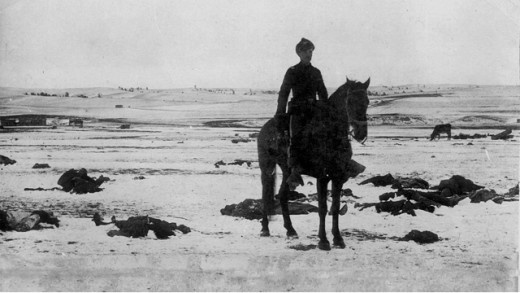
More than 150 men, women and children had been slaughtered. 51 wounded. In certain circles, some estimates put the death toll closer to 300 Natives, families, rounded up and shot to death. Albeit, those are Native and Civil Rights group estimates and the government stands firm on "only" 150 "casualties"
39 soldiers died as well mostly from friendly fire. The perplexing ending still causes me to stop in disbelief at the fact that, besides the wholesale slaughter, 21 of the soldiers were awarded the Medal of Honor for their involvement.
Many Native civil rights leaders and organizations have fought to have these medals renounced and taken from the long dead soldiers. It remains unresolved.
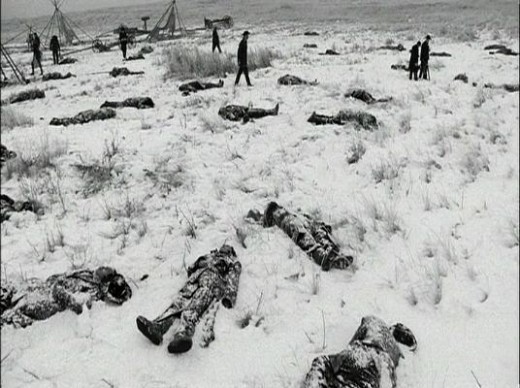
Where To Draw The Line.
Do you agree or disagree with Natives seeking to strip soldiers of the 7th Calvary of their Medal Of Honor?
Wounded Knee, South Dakota
The Oglala Nation Born
AIM and fellow activist groups where in Wounded Knee to make their stand. A Stand in honor of the past sacrifice. However, the government was not having it. FBI and police threw up roadblocks faster than people could get in and were arresting Natives who were trying to get into or out of the city. The government sealed off the area and they along with the Native protesters entrenched like armies on a World War One battlefield. The media complex as well, indeed, the nation was captivated. Soon the FBI was joined by US Marshals and a deployment of National Guard troops from no less than five surrounding states.
Ten days in, the federals were forced to lift the roadblocks and, with the cordon briefly lifted, new supporters and activists joined the Oglala Lakota and AIM at Wounded Knee. Media coverage had made action an inspiration to Natives and civil rights supporters around the country.
The leaders of AIM declared the territory of Wounded Knee to now be the independent Oglala Nation and demanded negotiations with the U.S. Secretary of State to be recognized as sovereign nation. They even sent a delegation to New York to present their case before the UN.They wanted to be recognized and they wanted it right away.
Although the New York delegation received mass media attention that in turn spurred the support of not only the Native community, but, the public in general, the UN would not grant them their request for audience let alone even take their claim seriously.
the United Nations did not start examining the unethical treatment of Natives until 2012.
Where Do You Stand?
Do You Feel AIM and the other organizations had the right to occupy Wounded Knee?
After 30 days of stalemate in Wounded Knee, the government's tactics took a dastardly turn. They cut off the electricity, water and food supplies. Harsher still since it was winter in South Dakota. The feds even blackballed the media from the area. Gag orders were in place. The suits had their plan and the plan was to starve the Natives out and to keep them from gaining any more sympathy or support from the public.
Natives began making secretive runs over enemy lines to acquire medical supplies and food. Some were met with "extreme prejudice" by paramilitary staff. Albeit, the government denies this - saying that any Natives caught were arrested and released shortly after.
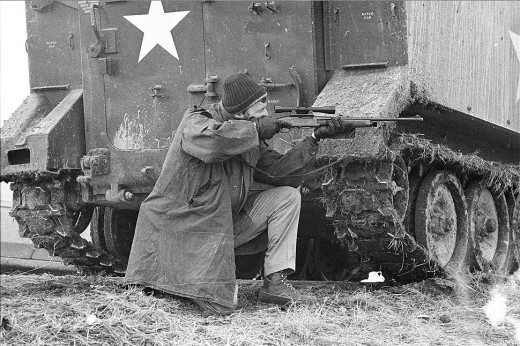
Indiscriminate Shooting War
Both groups had been shooting at each other. The fighting intensified in the Spring and the situation came to a head. A US Marshall was shot and paralyzed in March. A Cherokee and an Oglala Lakota were killed by shootings in April. Then, on April 16th 1973, Frank Clearwater and his pregnant wife, Cherokees from North Carolina, joined the occupation. Frank was shot in the head on April 17 while he slept by a US sniper and laying next to his pregnant wife. On April 25, less than twenty-four hours after his arrival at Wounded Knee, Frank Clearwater was dead.
One of the stranger cases at Wounded Knee was the disappearance of Ray Robinson. See "A Mystery Under Fire" at the end of main article.
The Final Volley
On April 26th, a well known and beloved member of the Oglala Lakota, Lawrence “Buddy” Lamont was killed by a government sniper. He was solemnly buried in a Sioux ceremony on the site. After that, tribal elders had had enough. They called for the end of the occupation.
On May 8th, 1973 an accord had been reached between federal government and the Natives. The insurgents disarmed and disbanded. Three months after the siege at Wounded Knee began it was over.
Most of the Natives were so distraught, they simply walked out of town between the federal barricades not even stopping or looking at the armed forces getting ready to move in and enforce the pact. The government took control of the town.
Wounded Knee, South Dakota had been so damaged by the events that it wasn't clear to be inhabited again until 1994.
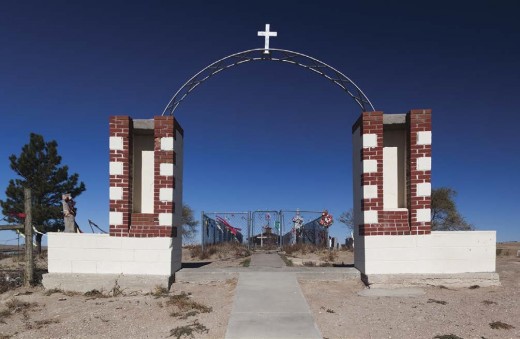
In Conclusion, Author's Observation
Since the landing of the Pilgrims on Plymouth Rock, Natives have been treated with an appalling underhanded policy. They were manipulated, lied to, and even brought to the verge of eradication by the US Government and its Army. Those few remaining where rounded up and placed on reservations where even basic necessities that most take for granted where unavailable. To not understand the anger and frustration of AIM and other Native peoples is to live in ignorance. I can feel for these people, how would you feel if tomorrow a large opposing force landed on the beaches of Oregon or Virginia and began killing citizens indiscriminately because they wanted the land we lived on? Would you simply stand aside and say "OK, it's yours take it." or would you fight?
Of course you would fight! It's your home, this is where your family and friends are, everything you know and love threatened by an invading force far advanced to us. Your way of life stripped away in a few fleeting moments.
That is what our ancestors did to the ancestors of the Natives today. We destroyed a way of life. We almost wiped an entire race of humans, humans like us, from the face of the planet. For acreage, tracts of land. Those remaining still struggle for dignity and cultural heritage. The government tried to forget about them, the reservations "given" to Native Nations were wastelands with few, if any natural resources, rocky and dry ground that never would grow crops and no electricity. Most reservations are still in this condition today, in 2016.
Should we not recognize the Native people's suffering and atone for the sins of our forefathers? Is it not time to at least acknowledge what has transpired was awful, horrific, and genocidal and issue a formal apology?
Really what we should do is give them back lands that are sacred to them, provide updated utilities and internet access to all reservations, and pay Natives restitution no matter they live on a reservation or not. That would be a good start to an apology that will never end.
Article Review; Informative or Twaddle
Did you find this article interesting/informative or was it not?
A Folded Leaf Suggestion
Subplot; The Disappearance of Ray Robinson
A short look about the vanishing of Ray Robinson, civil rights activist, who went missing and presumed dead during the Wounded Knee standoff in 1973. While not part of the main article subject I felt in merited a short addition to the end of the segment. Ray Robinson has never been found.
A Mystery Under Fire - The Vanishing of Ray Robinson
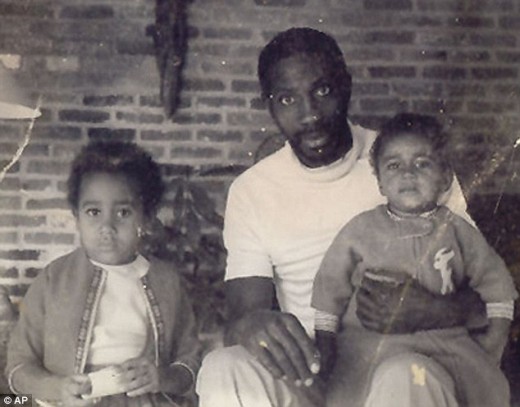
In the 1960s, Ray Robinson was steeped in civil rights activities. He had forged a name for himself among both sides of the conflict and worked tirelessly at bringing rights to people of all colors. He was a supporter of Vietnam Veterans Against War (VVAW) and at a group's meeting in 1973, Ray heard the plight of AIM and their supporters calling for aide at Wounded Knee. Ray decided to join in the struggle and left Alabama for South Dakota.
Witnesses place Robinson at a rally in the occupied town. Then, gone. Not a trace of Robinson could be found, it was as if he just vanished. Records and accounts are sketchy at best and some place Ray in Wounded Knee for up to a week, others a few hours. Whichever may be, Ray Robinson was never seen again.
Ray's wife, Cheryl Robinson, filed a missing persons report with the FBI and then in 1974 traveled to AIM headquarters to inquire if they had any knowledge of Ray's whereabouts or even a clue to such. AIM representatives told her there was no record or Ray Robinson being at Wounded Knee and that there was nothing the organization could do to help. Cheryl next hired a private investigator, Barbra Deming, and what she found would only cause more confusion and controversy then had already transpired.
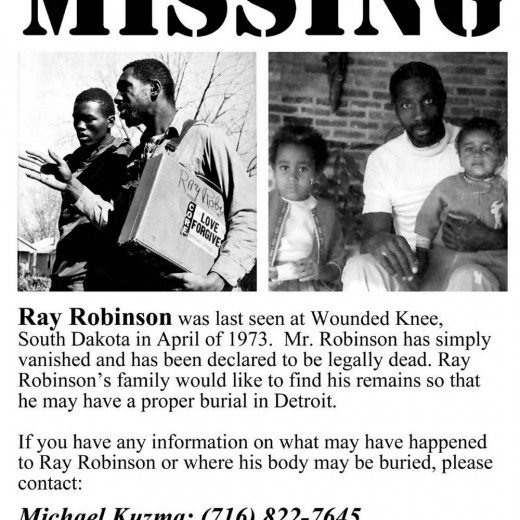
More Questions Than Answers
Barbara reported to Cheryl that a witness stated Ray had backpacked into Wounded Knee to avoid government checkpoints. Upon arriving, Ray was hungry and went to the commissary. He had been eating a bowl of oatmeal when a member of AIM's militant faction ordered Robinson to check in with AIM leaders. Robinson, not known for being partial to authority, told the security agent he would after he finished his meal. Apparently, a fight ensued and then the witness heard a loud crack and watch Ray Robinson drop to the ground.
However, there was no empirical evidence and, more tragically, no body to be buried back in Detroit.
20 Years Later. The FBI Responds
In 2014, using the Freedom of Information Act, Ray Robinson's daughter petitioned the agency with the power of the act for information about her father. Finally, the government would provide the information of what transpired at Wounded Knee,
A memorandum from the FBI dated May 21 1973, stated an Indian woman had left Wounded Knee and said there were "200 Indians, 11 Whites and two Blacks" in the occupation. Robinson was reported as having been accompanied to the siege by a Black female. The female returned to her home town, but he disappeared. The Robinson family lawyer said FBI files included statements that 'Robinson had been tortured and murdered within the AIM occupation perimeter, and then his remains were buried "in the hills."'
AIM denies any knowledge of Ray Robinson's whereabouts or his disappearance. His body has never been recovered.
© 2016 Adam Stier


